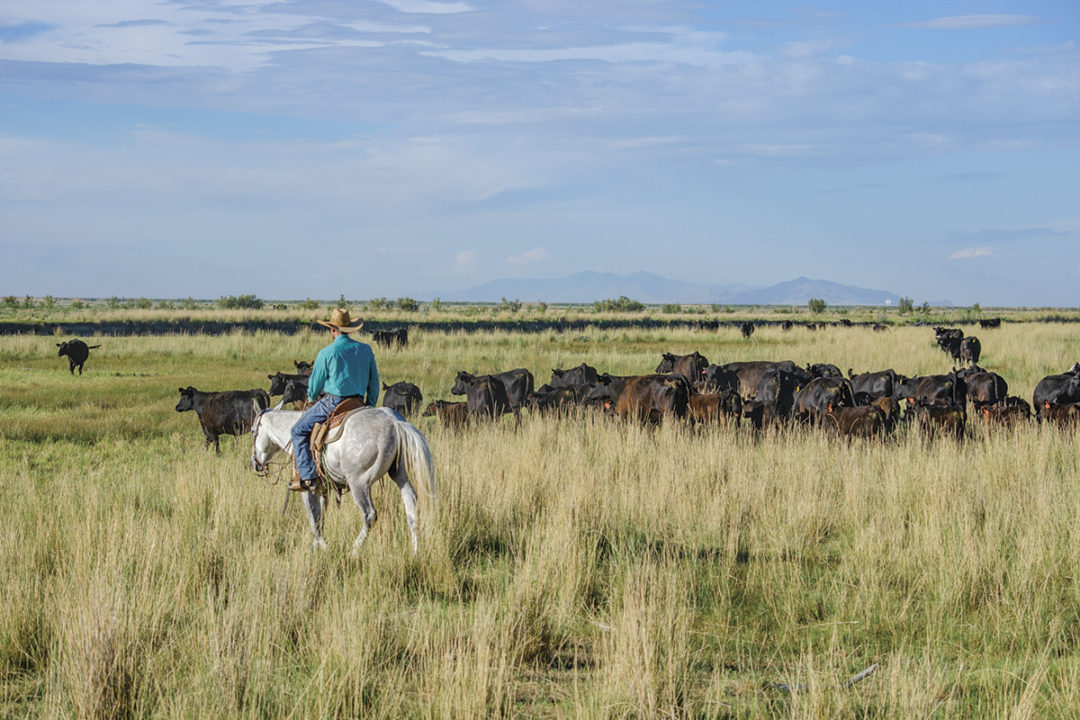Grazing cattle have the unique ability to upcycle, or convert, low-quality forages into high-quality, nutrient-dense protein. Most grazing lands are either range or pasture, accounting for roughly 36% of the contiguous U.S., with 409 million acres of privately owned rangelands, 361 million acres of public rangelands and 119 million acres of pasture, per the USDA. These lands are diverse, providing not only feed for grazing cattle but also supporting a wide range of plant and animal species, some of which are endangered. Grazing cattle are an integral part of these unique ecosystems, and grazing management plans (GMP) are key to maintaining productive working lands.
The benefits of a well-executed, regularly measured, written GMP are numerous. They lead not only to profitability necessary for economic sustainability for a producer but also to additional positive impacts on water resources, land resources and air and greenhouse gas emissions, including:
- Maintained or improved native ecosystems
- Protected and/or improved riparian areas
- Reduced soil erosion and particulate emissions
- Optimized plant cover relative to fuel loads
- Improved access to water for cattle on pasture
- Increased forage production and improved utilization
- Increased water infiltration and retention
- Improved wildlife habitats
A successful GMP will result in grazed forages with enough leaf left to maximize photosynthesis and promote plant regrowth. Increased forage production and resilience directly impact profitability by reducing dependence on supplemental feed. Successful GMPs also lead to better soil water-holding capacity, maximizing use of rainfall, which is particularly essential in persistent drought conditions present in many parts of the U.S. Combined with proper nutrient management, not only can a successful GMP increase forage volume, but it can also increase forage nutrient quality, which directly relates to increased cattle growth rates and higher fertility rates.
GMPs are also key to succession planning. Not only does a written GMP set up the next generation for success by providing them with the tools that they need to manage their operation, but it also helps to create better ranching conditions and increase profitability.
An essential part of GMPs is flexibility. Formalizing a plan on paper does not take away from the ability to pivot in an unexpected scenario. A GMP includes contingency plans for a variety of risks, allowing room for proactive preparation when possible. Due to vast differences in landscape and practices used by cow-calf operations across the U.S., there is no one-size-fits-all GMP. For example, a producer on federal lands in Idaho is dealing with different geographical challenges, levels of rainfall and ecosystems compared to a producer on private lands in Georgia.
This results in the need for vastly different plans.
While this does present a challenge for producers, the U.S. Roundtable for Sustainable Beef has laid out some key criteria and planning steps in its sustainability framework that will help ensure the success of a GMP, regardless of location:
1.Assess current resource conditions (e.g., make a ranch inventory) relative to potential optimum conditions2. Set ranch goals and objectives designed to move conditions toward optimum
3. Select management actions to achieve goals (e.g., stocking rate, timing, duration, rest, intensity, pasture size and number, infrastructure management and/or improvements, business management changes)
4. Make contingency plans for drought and other risks
5. Conduct regular and repeated monitoring of key indicators and compile resulting information
6. Take action or make operational adjustments based on monitoring results
Beyond these general guiding principles of a GMP, some regional conservation considerations might also include:
- Native plants, animals and habitats/ecological systems
- Rare or unique plant or animal populations
- Soil health and soil erosion risk
- Water quality and water cycle evaluation
- Range/pasture condition or health
- Streamside/riparian areas and wetlands
- Invasive species/weeds
Following these guidelines, GMPs can enable producers to maintain open spaces, natural habitats and thriving ecosystems while maintaining or even boosting the financial health of an operation. With optimization of land resources, producers ensure the longevity of their operations, creating something that can be sold or passed on to future generations in prime condition.
Exceeding the overwhelming benefits at the ranch level, written GMPs help the beef industry at large take credit for the positive environmental, social and economic impacts the industry has on ecosystems and communities. This is an essential topic for industry spokespeople in conversation with policymakers, environmental advocates and international decision-makers, helping them ensure the preservation of pasture and grazing lands in the U.S. and avoiding burdensome policies and regulations that might otherwise be made without beef cattle producers in mind. GMPs allow the industry to benchmark its current status and provide a place from which to grow toward further success.
For cattle producers looking to enhance the social, environmental and economic sustainability of their operation, and of the entire beef industry, a GMP is the perfect place to start.









